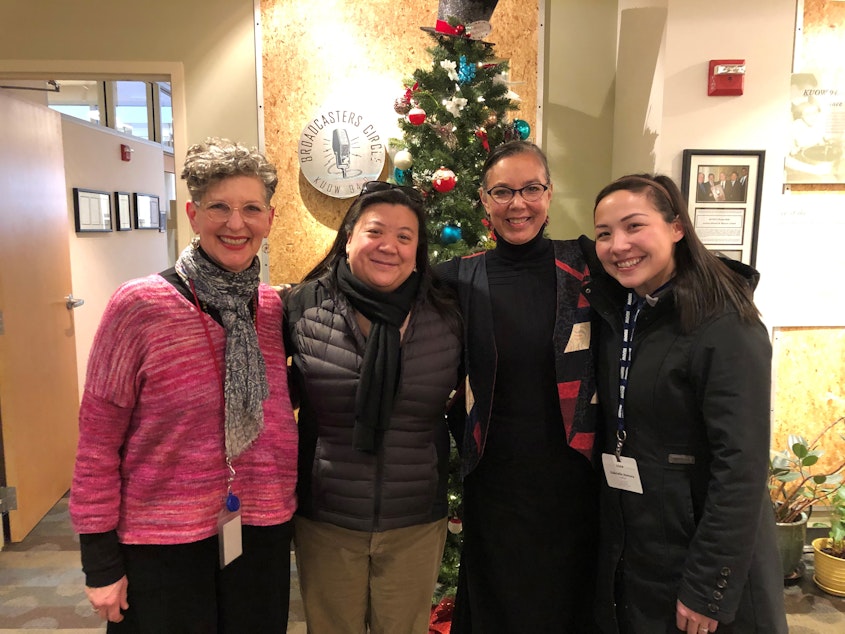Rethinking cultural stereotypes in The Nutcracker

Marcie Sillman spoke to three local dancers about their experiences watching and dancing in The Nutcracker.
There are many different versions of The Nutcracker, but they all spring from the same 19th century story: At a family Christmas party, a young girl receives a wooden nutcracker doll as a gift. This doll transforms into a valiant prince, fights and wins a battle against a rodent army, then spirits the girl away with him to a magical land where they are entertained by a bevy of dancers from around the world.
That's where some people find the ballet gets a little dicey. In particular, they point to a section that features dancers dressed in versions of Chinese clothing, sometimes with pigtails and coolie hats.
Updating the Nutcracker
Removing yellowface from theatrical productions has been a frustratingly slow process. Now some ballet companies are beginning to address problematic racial overtones found in The Nutcracker. Dancer Gabrielle Nomura Gainor spoke about the changes with KUOW’s Marcie Sillman, along with Vivian Little and Marie Chong – both former dancers who have gone on to become cofounder of Dance Fremont and artistic director of ARC Dance, respectively.
We invited three dance experts to talk with us about the ballet's traditional choreography and where the holiday classic stands with them today: Marie Chong is the artistic director of ARC Dance in north Seattle; Gabrielle Nomura Gainor is a dancer, currently working on a project called “Farewell Shikata ga nai,” that uses dance, theater, and live taiko drumming to honor the wartime incarceration of her family and community; and Vivian Little is a former professional ballerina and co-founder of Dance Fremont.




